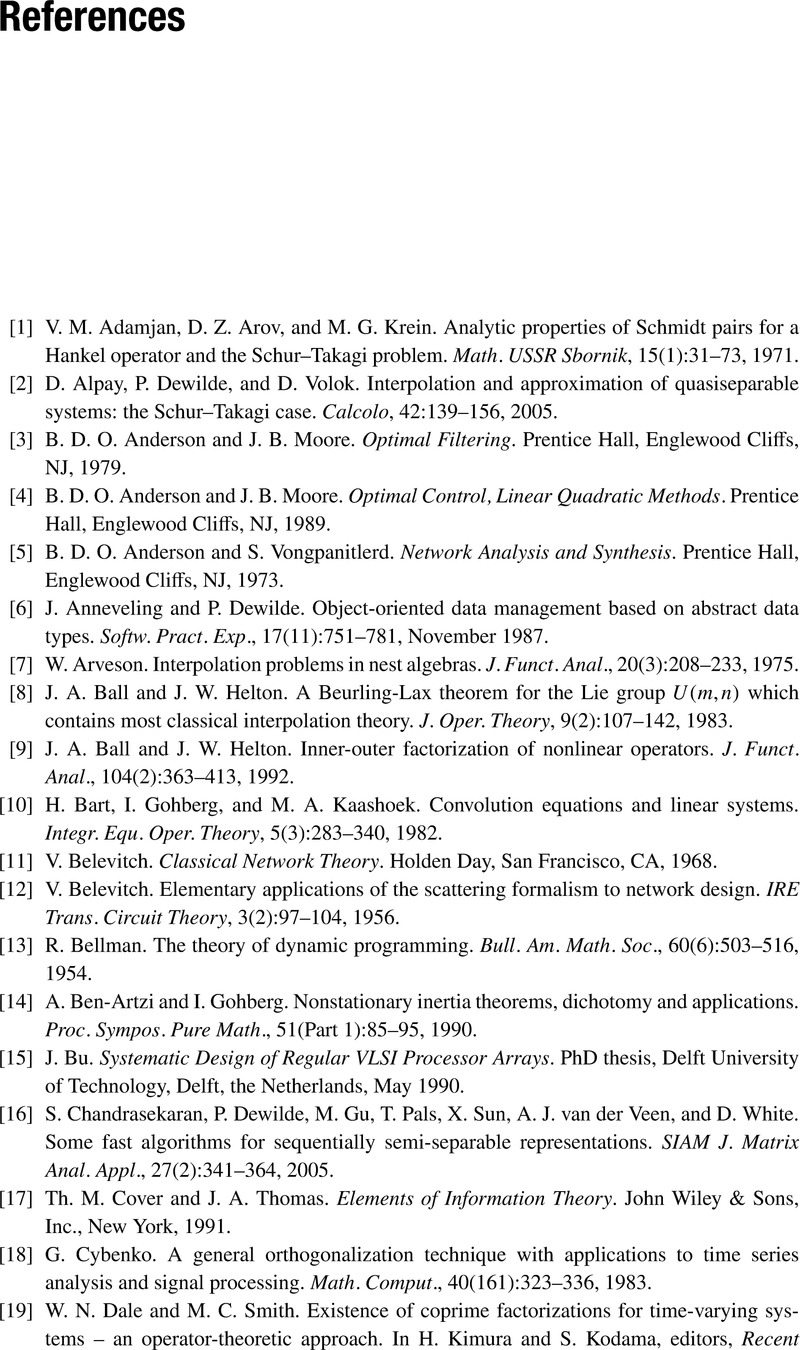References
Published online by Cambridge University Press: 24 October 2024
Summary

- Type
- Chapter
- Information
- Time-Variant and Quasi-separable SystemsMatrix Theory, Recursions and Computations, pp. 300 - 303Publisher: Cambridge University PressPrint publication year: 2024

